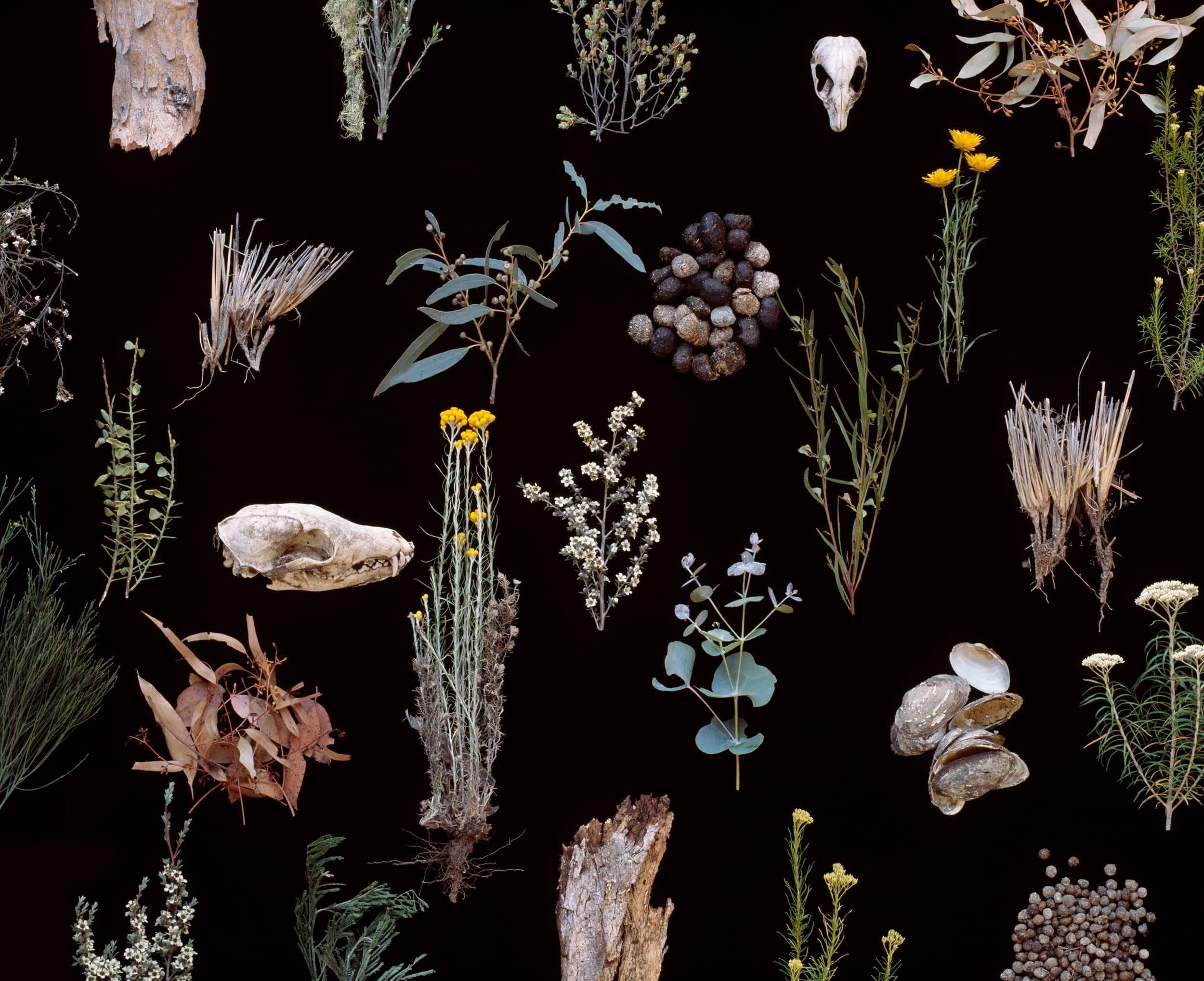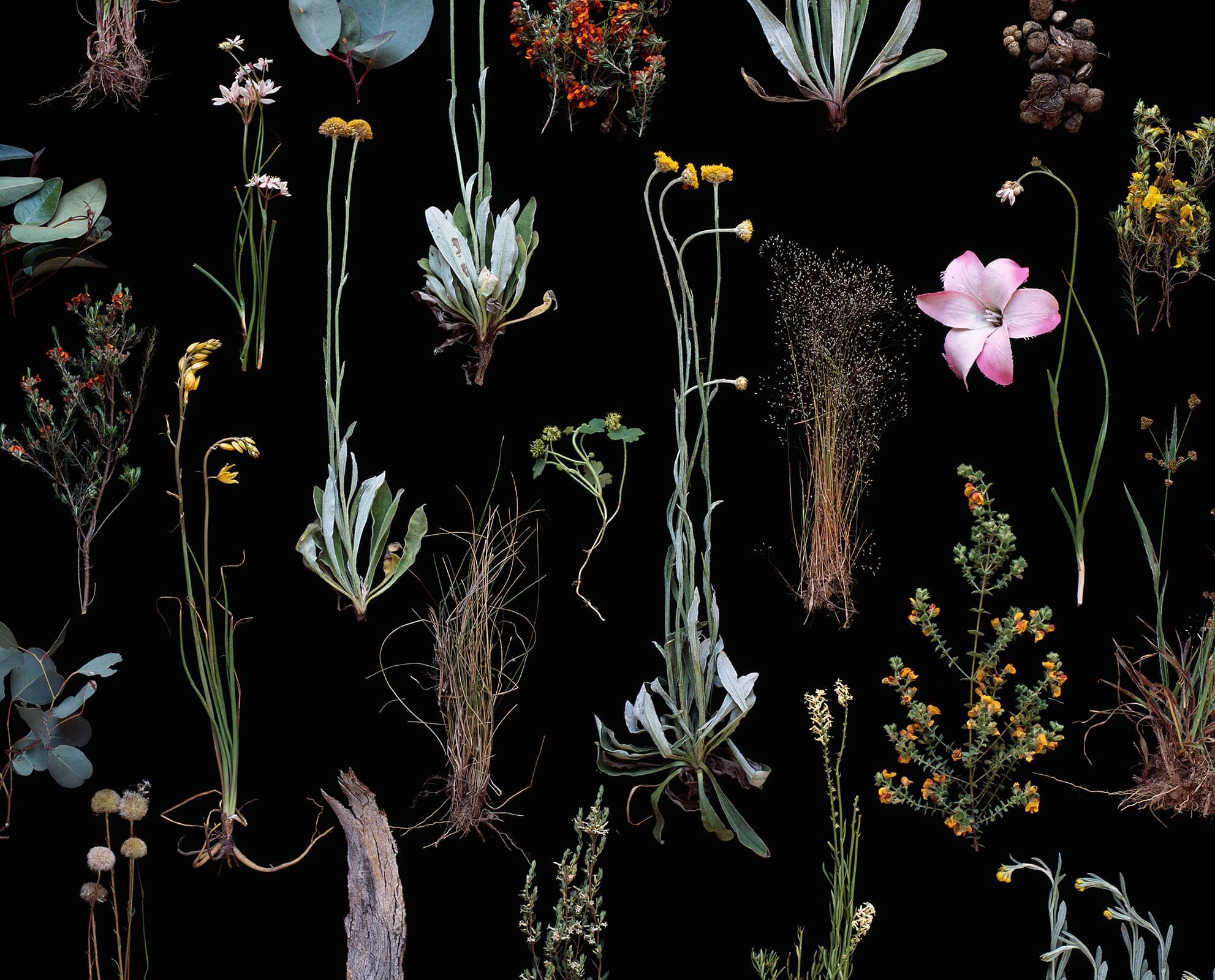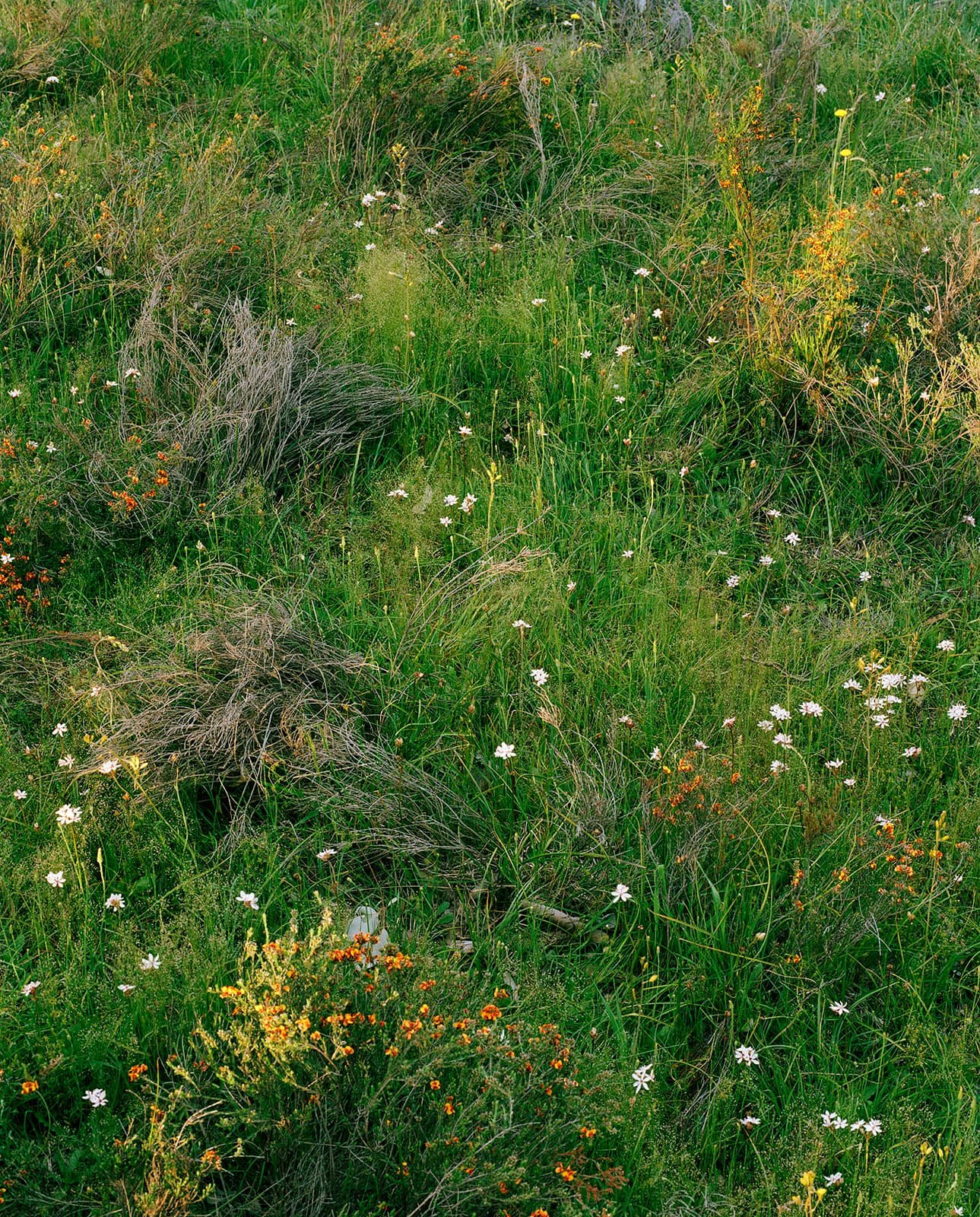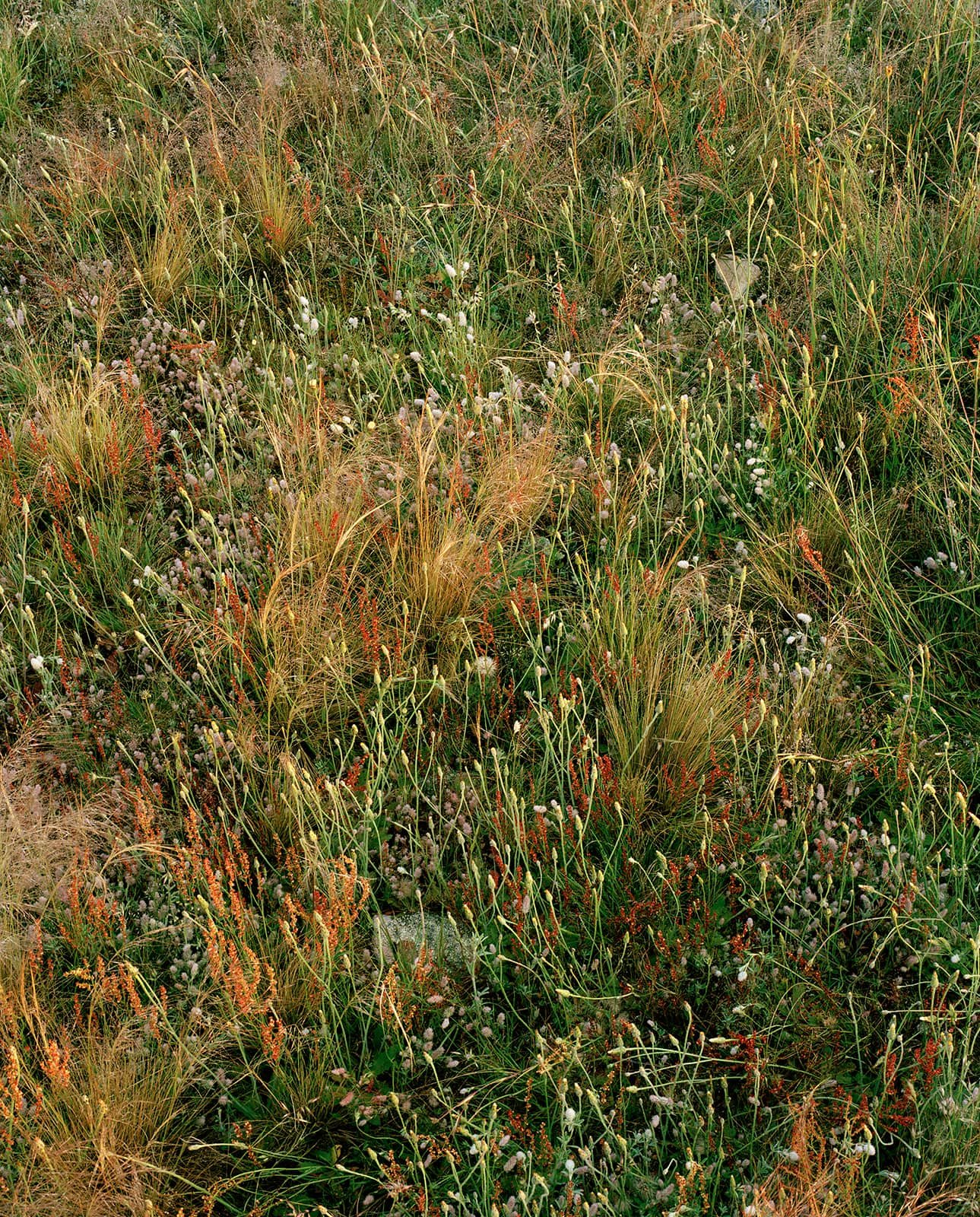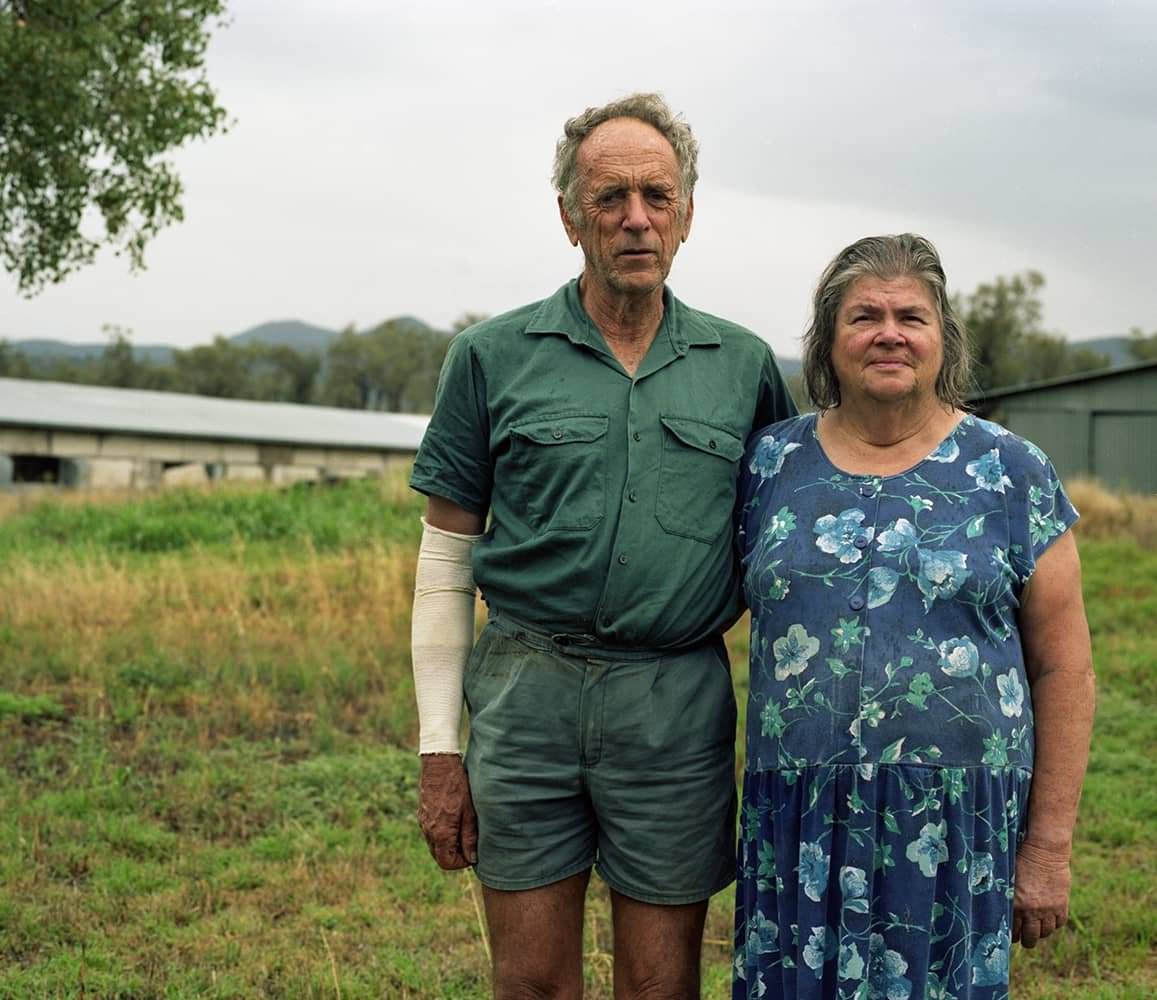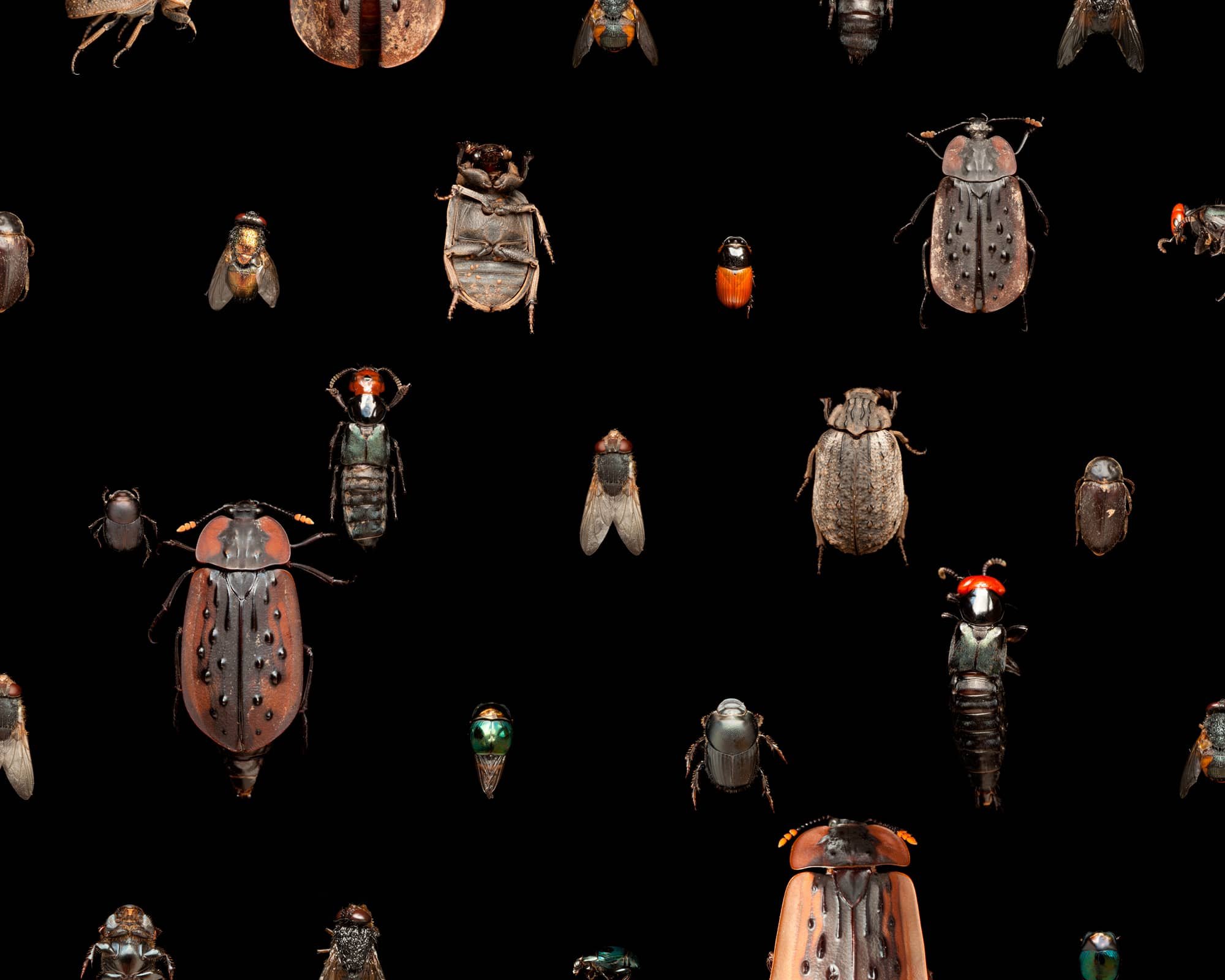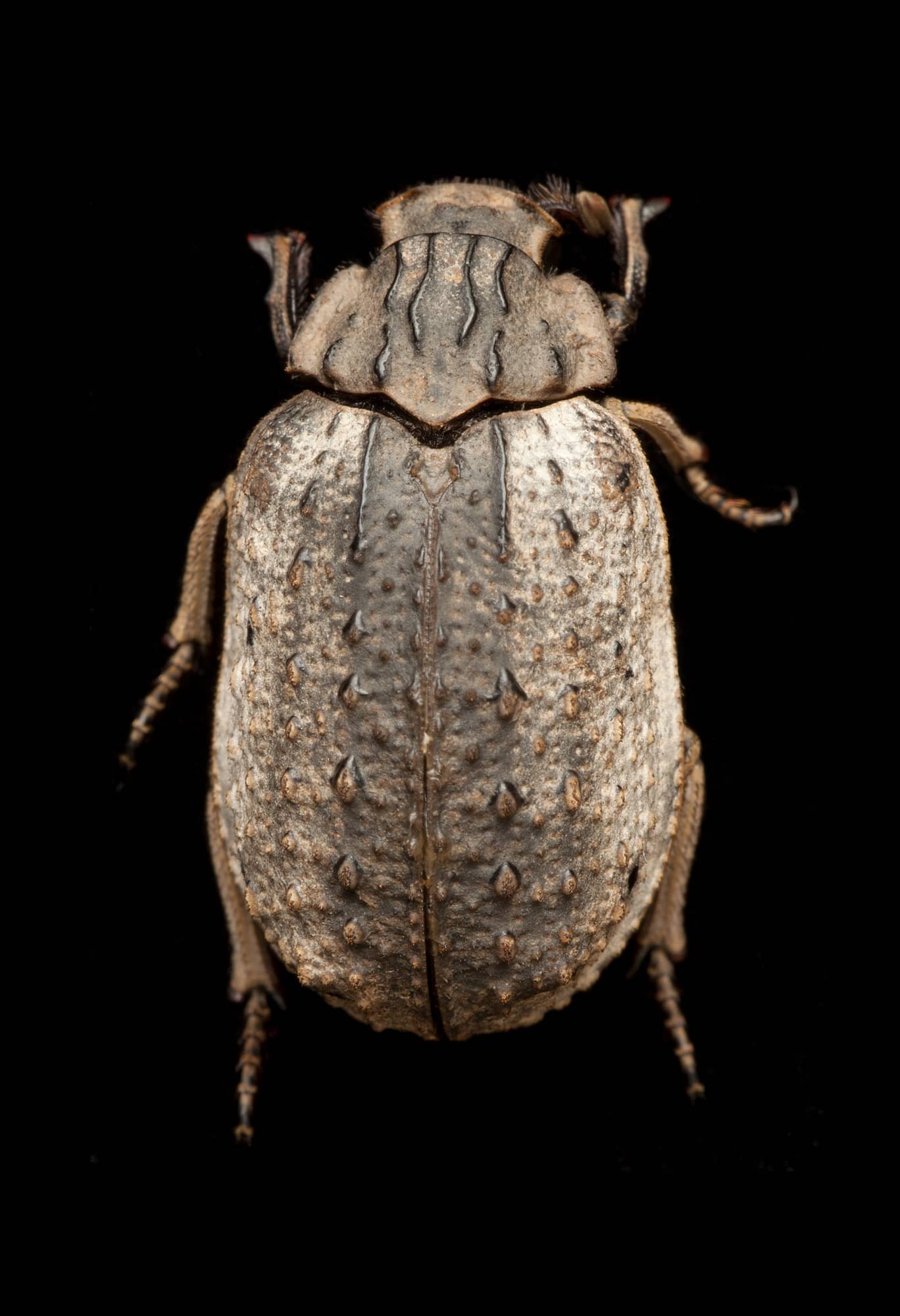Juror Carolyn Young
Carolyn Young is a member of our 6th Edition Juror Panel.
Who are you?
I am a fine art photographer. I have a professional background in environmental science and continue to work in this field part-time while working as an artist part-time. My care and concern for nature is centre focus for my art practice. My art practice predominantly considers ecosystems and native animals in Australia that were once prevalent but are now endangered. My focus is within mostly rural areas, where farming is the biggest land use and therefore where the most can be gained from learning how to live with and manage these ecosystems sustainably.
“Wamboin, Active Flowering”
Archival Inkjet Print
By Carolyn Young
What inspired you to pick up a camera?
Drawing and painting were my passions as a child. It wasn’t until high school that I got interested in photography, and where I had access to a dark room. I had an incredibly generous art teacher who was really supportive of my dark room experimentations and, more importantly, my way of seeing through the lens. I spent most of my lunch times in the dark room.
After high school I went to university and studied natural resources (environmental science). During my early working years the camera remained a solid companion on work field trips and on holidays. After about 10 years, I became restless/unhappy in my career and sought something else. I looked at the now classic career book, “What Color is Your Parachute” by Richard Bolles that asks you to recall your passions as a kid. Art was of course was centre present. From there I got more active in taking evening photography classes. I’m not sure why I chose photography over other art forms - maybe it felt more accessible, or I felt more confidence there. Through the local photography college in Canberra, PhotoAccess, I found a really supportive community and was then encouraged by my tutors to apply for a photography course at The Australian National University School of Art.
“Wamboin, Summer Drought #1”
Archival Inkjet Print
By Carolyn Young
What first inspired your desire for capturing nature?
Art was my first passion, nature was my second. I grew up on 5 acres next to bushland and creeks in Sydney north west. My brothers, friends, and dogs and I would be gone all day playing in the bushland. I think this was the biggest influence on my feeling an attachment to nature and this extension into my art practice.
Another influence was my work in the environmental sciences. I used to go on field trips into forests, rivers etc and was required to take photos as part of the field trip. This developed into my personal photography work, with my first series being a documentary of river scientists. My study at ANU also fed my desire to capture nature. I found like-minded people in the field studies program that was run through the Environment Studio where we were encouraged to make art specific to place and about environmental issues.
“Wamboin, Ringtail Possum Food”
Archival Inkjet Print
By Carolyn Young
Your work utilises an almost delicate composition, can you discuss the artistic decision behind this?
I don’t think there was any particular artistic decision towards making delicate compositions. Other people have make a similar observation of my work. My natural (childhood) tendency as an artist was to be a bit messy, to the point where my high school art teacher would ask me to do the work again and with more care. I think my training within the scientific method (i.e. rigor, repeatability, neat record taking) had a major influence on my art practice –in particular the “Grassy Woodland” series. For the still life works in this series, I remember being obsessed with getting the grid the same across all the works and not allowing any specimens or artefacts to touch each other in the grid. The repetition in the works – which follows a topology approach (like the German photographers Hilla and Bernd Becher) – is like the repetition in the science experiment. It was important for me (at the time) that a viewer could look across my series and see the change in biodiversity as land use changed. I also wanted to show the individual specimen, as well as the diversity (or lack thereof) within an ecosystem. I think this method lent itself towards a delicate composition. Examples from this work are: “Wamboin, Active Flowering”, and “Reference Grassy Woodland (Bookham Cemetery), Active Flowering”.
“Reference Grassy Woodland (Bookham Cemetery), Active Flowering”
Archival Inkjet Print
By Carolyn Young
Can you discuss why you choose Photography as a medium for your work and voice as opposed to others
I love looking at photographs both the domestic and fine art – probably more than any other type of art. My training in photography has further enriched this love, enabling to me to draw on theory when reading the photograph. When looking at photographs, I feel a direct connection between myself, the sitter and the photographer. For this reason, viewing a photograph feels intimate – a special permission to gaze.
Photography can also provide a veracity that other art forms cannot. This was important to me when I first started making artworks about nature. I wanted to persuade people to see a beauty in nature that exists, but perhaps had been missed by many. For example, the Australian native grasslands with their subtle aesthetic and which can look like a pasture paddock to the untrained viewer (non-botanist). Veracity perhaps is not so important to me now. My work has had a didactic tendency (a legacy of scientific training I suspect, and desire to bring awareness), and I am now experimenting with other art methods to allow me to lean further into the lyrical and imaginative.
“Reference Grassy Woodland (Bookham Cemetery), Spring”
Archival Inkjet Print
By Carolyn Young
Have you experimented with other mediums? If so, which ones and how?
My current body of work brings in layers that involves drawing, dyeing with plants and still life photography. I am now comfortable with embracing more chaos in my artworks, and allowing points where there is little control and where natural processes, such as eucalypt leaf imprints, can influence the artwork aesthetic. I’ve been doing drawings of Australian mammals on water colour paper and then over-dying the drawings with plants collected from the animals typical habitat. This involves boiling the drawing and sandwiched leaves in water. Once the paper has been withdrawn and dried, I respond to the dyed areas by re-working my drawing into the imprinted shapes. Leaf dying on paper can be controlled to a point, but the leaves and dyes shift around in the process. The final layer to the photograph is collecting specimens (mostly plants) that relate to the animal’s habitat. In comparison to my straight photography work, I’ve found that the layering process and the use of different mediums has allowed me to explore themes with new depth and complexity. “Wamboin, Ringtail Possum Food” provides my first example of this process.
For the series I completed last year, “Bless Their Dear Little Faces”, I also experimented with working over old cyanotype prints with eucalypt leaf imprints, and then doing a leaf collage over the print. The cyanotype interacted with the leaf dye in strange ways, giving ghost like appearances within some of my resulting imagery. These prints were then affixed to small silver plates found in op shops. The series came about organically, I did not have an end point in mind, and allowed the process to guide my decisions and influence what I was trying to say in the artwork. I think experimenting with other mediums and ways of presenting the artwork allows surprise and growth in your art practice. Paramount to this work was spending time with an artist friend Nino Bellantonio who works in collage, and taking some of that medium into my own. “Eastern Pygmy Possum” and “Eastern Quoll #2” are examples from this series.
“Native Pasture, Spring”
Archival Inkjet Print
By Carolyn Young
Can you talk about your biggest learning experience during the process of photographing something?
I easily get super focused and obsessed when creating my photography series. I can take/make way too many photos, and in the process lose my ability to make sound judgements. A big learning for me was to realise this and put steps in place to avoid this, such as force a break from the work, invite other people to critique your works in progress (both trained artists and those who appreciate art), and regularly look at other people’s artworks.
Another learning experience was through doing portrait photography. I’m not always a quick worker and this can annoy people. To avoid taking up too much of people’s time I’ve learnt to have a good plan in place before the photoshoot, i.e. suss out the location in advance, take test shots, work out the equipment needed, and have this ready to go. Sounds simple-stupid in retrospect.
“Shirley and Max”
By Carolyn Young
Can you describe how you SECURE your very first solo show?
My first solo show was called, “Researching the River”, and was located in an exhibition space at CSIRO, Canberra. The show was made possible through the actions of the one of scientists I photographed for the series. He had shown the picture I’d taken of him to the communications person at CSIRO, and then they in turn invited me to have an exhibition in their small gallery. Your first solo show doesn’t have to be big.
My advice for artists wanting to have a solo show is to get a body of work together, show this to people (in person or on the internet), enter competitions, and then follow opportunities that arise. I found doing formal photography study at university, where you are trained to put together a series and exhibit, was an essential step for me towards having quality work ready for a solo show. You can also make your own opportunities by applying for shows at galleries.
“Carrion Insects from a Kangaroo Carcass”
Archival Inkjet Print
By Carolyn Young
What projects are you currently working on?
I’m currently working towards putting together a new series. The working title is “Hidden”. It’s about small Australian mammals that were once common in the ecosystems where I currently live. My guidebooks tell me that these species are still present, however, I am not sure if they are present or locally extinct - many remain hidden from me during my daily walks.
The process for making these is layered, as outlined above when I spoke about experimenting with drawing and leaf dyeing. When I draw into and over the eucalypt leaf imprints, this partially hides the animal in the picture. It’s interesting observing people looking at my prints, they either see the animal straight away or don’t (and may never unless someone shows them). I am planning on doing about 10 images for this series and am in the process of applying for an exhibition to show this work. I find having an upcoming exhibition about every two years is necessary for me to keep focused on making work. Study has the same impact.
“Hide Beetle”
Archival Inkjet Print
By Carolyn Young
What is the best advice you have gotten from a fellow artist/photographer?
Just get out there and photograph!
I can find it hard to start a project – hence I often establish a structure around my art practice, such as study, collaborating with others and having exhibitions planned.
To view more of Carolyn Young’s work

